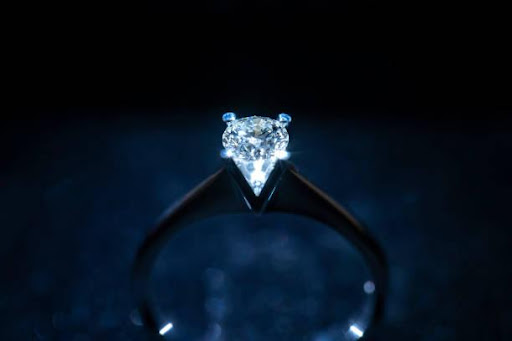
If you've decided that it's time to get engaged, congratulations! Now is the time to start thinking about how you want your ring to look. The diamond is one of the most important parts of a ring, so picking one out can be daunting. With these tips in mind, however, choosing a diamond that fits both your budget and expectations will be easy.
Shape - As a diamond shopper, you have the option to choose from several different shapes. The most common are round, square, rectangular and oval.
Round - The most popular shape because of its classic look. This can be an excellent choice if your budget is limited but you still want a stone that is dazzling. It works well with any style of engagement ring—whether it's vintage or contemporary—and brings a sense of elegance to any setting. A round diamond will appear larger than other shapes because its proportions are more balanced; as such, it will also appear larger when set in platinum or white gold than in yellow gold settings where there are more curves around it (i.e., princess).
Color is the most important factor in determining the value of a diamond, as it affects its value more than any other consideration. Colorless diamonds are graded on a scale of D-Z, with D being the most transparent and colorless and Z having noticeable yellow tint to it. The colorless range is also divided into two sub-categories: Near Colorless (G-J) and Fancy White (H-I).
The highly sought after diamonds are generally within this range since they can be used for all kinds of jewelry making purposes without compromising their appearance or diminishing their quality in any way.
Here’s an example: if you want to buy earrings made out of diamonds then fancy white colored ones will look great whereas J color will not be able to match up with H or I scores because they have more yellow tint compared to others which makes them less attractive visually but still very much usable nonetheless!
Clarity refers to the number of imperfections in a diamond. As you may know, there are three main types of imperfections: natural, man-made and microscopic. Natural imperfections can be found in the rough stone itself; these include blemishes (small nicks or cracks) that are present at birth but later disappear without any treatment. Man-made imperfections include those created during processing such as heat treatments and pressurization changes which can alter the coloration or clarity of your diamond. Microscopic flaws are also known as "inclusions" and affect only one particular facet—not all faces at once!
The fewer flaws there are on one side versus another determines how much value it adds to your purchase price when sold as an individual piece rather than part of a larger cut gemstone (e..g., if there were 2 small scratches on one face then they might add up into something significant).
When it comes to diamonds, cut is king.
It's the most important factor in determining the quality of a diamond, and it's also the most important factor in determining its value. Cut refers to how well-executed a diamond's facets are. The better executed they are, the more light that will be reflected from within the stone toward your eyes—and that means higher brilliance and fire (i.e., sparkle).
For example: A poorly cut round brilliant center may look dull and lifeless compared with an expertly cut one because there aren't enough facets on its surface to disperse light properly through every facet; this results in less brilliance and less fire than you'd find with a well-cut stone.
As you're aware, the carat is a unit of weight used to measure diamonds. Although it may seem like a simple measurement, there's more to it than just "bigger is better." In fact, there's quite a bit one needs to know about the carat before going out shopping for a diamond ring.
To begin with, if you've ever heard someone refer to a stone as "one-carat" or even "two-carat," don't be surprised—that person may have been referring not only to its actual weight but also its relative size compared with other stones in its class (more on that later). The term “point” refers simply to ten one hundredths of a gram; therefore, an average 1ct diamond weighs about 0.3g and has 100 points (or 100 “points”). Therefore:
A 0ct diamond weighs 0g – so small you can barely see it! This is often referred as being “pendant sized” since many women prefer wearing them without earrings attached since they're so lightweight they tend not fall out easily; this type of cut is also known as Princess Cut because they were supposedly first discovered in India during the year 1568 by an English adventurer named Sir Walter Raleigh who brought them back home along with other exotic treasures from his travels around Asia at that time period...
Sell your diamonds with ease with Diamond Registry’s comprehensive approach and vast global industry connections to help you find the best buyer for your diamond fast. Visit www.diamondregistry.com/sell-your-ring to take your first step to fast, easy and reliable way of selling your diamond.
Want to check and calculate diamond per carat instantly? Go to DR’s diamond price calculator www.diamondregistry.com/diamond-price-list/#calc-move-to to know how. Reliable and trusted carat calculator in the diamond industry since!

